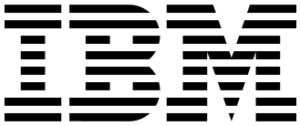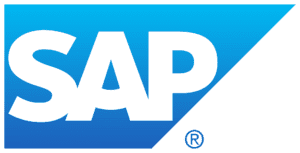The concept of a data warehouse originated a couple decades back as an answer to the sprawl of storage arrays and NAS boxes. Organizations needed a way to corral their data in one centralized location.
These days, data warehouses can exist on premises, heavily virtualized, in the cloud, or in some kind of hybrid arrangement. However it is done, a data warehouse is essentially a store of a large amount of data that has been gathered from a great many sources. In other words, it is a data management system that helps in the areas of storage centralization, business intelligence (BI), and analytics.
It’s a great way to consolidate data so it can be subjected to some kind of analysis, as well as a way to retain historical data.
Read more: Data Center Survey: Outages Less Common, More Expensive
What Is a Data Warehouse?
A data warehouse is a type of data management system that is designed to enable and support business intelligence activities, especially analytics. The elements of the data warehouse vary from vendor to vendor, depending upon the ultimate purpose. But many of the following elements will often be found within a data warehouse:
- A database
- Storage arrays, NAS units, and/or cloud storage
- An ELT solution for extraction, loading, and transformation
- Some kind of reporting and data mining system
- Analytics capabilities
Best Data Warehouse Tools & Solutions
ServerWatch reviewed the top data warehouse tools, focusing on those vendors with the strongest capability to offer on-premises data warehouses. Many of these providers also offer cloud-based data warehouses, but each possesses on-premises capabilities. Here are our top picks in no particular order:
Dell EMC

Dell EMC PowerScale is a scale-out NAS storage system designed to store, protect, and share business-related information. Regardless of the kind of data, where it lives, or how big it gets, the data lake remains simple to manage, grow, and protect. Use cases include IoT analytics while handling diverse data types, including streaming data with maximum ingestion speeds. It can support on-premises or cloud-based systems.
Key Differentiators
- OneFS operating system delivers a multi-protocol namespace to run any file, object, analytics-based application
- Single admin can manage PBs of storage with policy-driven automated management tools like DataIQ and CloudIQ
- Integration with a large ecosystem of applications provides flexibility in driving workloads
- PowerScale F900 is available in the cloud marketplace, including options like Google Cloud
- F900 is an integral part of delivering file services in the APEX IaaS program.
- Support for NVIDIA GPUDirect, parallel upgrades, in-line compression, and data deduplication
- Supports big data analytics workloads like Cloudera/Hortonworks, Splunk, Dremio, and Vertica
- ETL data in and out of the PowerScale data lake using the multi-protocol namespace
- Integration with ransomware defender, auditing, and encryption
- Scale up, down, or out to 252 nodes or 92 PBs of capacity
- Multiprotocol access including S3
Teradata Vantage

Teradata Vantage can be deployed on public clouds (such as AWS, Azure, and Google Cloud), in hybrid multi-cloud environments, on-premises with Teradata IntelliFlex, or via commodity hardware with VMware. It offers zero up-front costs, pay-as-you-go pricing, and portable licenses between deployment options.
Key Differentiators
- Unifies and integrates any type of data from sources within your organization, industrial sensors, and social media
- Supports all common data types and formats, including JSON, BSON, XML, Avro, Parquet, and CSV
- Scalable in every direction
- Supports R, Python, Teradata Studio, Jupyter, RStudio, and any SQL-based tool
- Support for various languages and tools through plug-ins, extensions, and connectors
- Combines descriptive, predictive, and prescriptive analytics; autonomous decisioning; ML functions; and visualization tools into a unified platform
- Gain visibility into supply networks, demand patterns, operations, procurement, manufacturing, sales, and finance functions
- Teradata software identifies and protects against potential threats and issues
- Uses real-time sensor data to improve productivity, reduce downtime, and improve both asset utilization and effectiveness
Talend

Talend Data Fabric is a united platform that handles every stage of the data lifecycle. This includes data integrity and governance, application, and API integration. It combines rapid data integration, transformation, and mapping with automated quality checks to ensure trustworthy data.
Key Differentiators
- Powered by Talend Trust Score
- Built for in-house, cloud, multi-cloud, and hybrid environments
- Self-service tools make it easy to ingest data from almost any source
- Integrated preparation functionality
- Integrate virtually any data type from any data source to any data destination
- Build data pipelines once and run them anywhere, including Spark and cloud technologies, with no vendor or platform lock-in
- Combines data integration, data quality, and data sharing in a single solution
- Simplifies data discovery, search, and sharing
IBM Db2 Warehouse

IBM Db2 Warehouse is an analytics solution offering a high-level of control over data and applications that is simple to deploy and manage. It is suitable when data must stay on premises because of privacy requirements, but it is also flexible enough to run in the cloud without giving up control over your data.
Key Differentiators
- In-memory BLU processing technology
- In-database analytics
- Provides scalability and performance through its MPP architecture
- Compatible with Oracle and Netezza
- Allows workloads to move between a public cloud or appliance and a private cloud
- Can accommodate a hybrid architecture
- Can be deployed from laptops all the way to large production clusters
- Choose either a single-node (SMP) deployment for Windows and Mac, or a multinode (MPP) deployment
- MPP deployment has a minimum of three nodes and a maximum of either 24 or 60 nodes
- Makes use of containerization technology with a lightweight container that doesn’t contain a guest OS or hypervisor
Vertica

Vertica offers a unified analytical warehouse that enables organizations to keep up with the size and complexity of enormous data volumes. It helps businesses perform tasks like predictive maintenance and customer retention, as well as financial compliance and network optimization. It aims to replace legacy enterprise data warehouses.
Key Differentiators
- Manage huge volumes of data at Exabyte scale
- Scalable MPP SQL analytical database with linear scaling and native high availability
- Scale SQL analytics solution by adding an unlimited number of commodity servers when the need arises
- Gain insights into data in near-real time by running queries many times faster than legacy enterprise data warehouses
- Integrate with existing BI and ETL tools
- Tightly integrated with BI and visualization tools, such as Cognos, Looker, MicroStrategy, and Tableau
- Supports Apache Kafka, Apache Spark, Apache Hadoop, Python, and more
SAP Data Warehouse

SAP BW/4HANA is data warehouse solution from SAP that is optimized for the SAP HANA platform. It delivers real-time, enterprise-wide analytics that minimize the movement of data. It can connect all the data in an organization into a single, logical view, including new data types and sources.
Key Differentiators
- Accelerates open data warehousing development
- Built for cloud and on-premises deployment
- Provides multi-temperature management options
- Delivers traditional data warehousing, such as operational reporting and historical analysis
- Also designed for IoT and data lakes
- Leverages smart data integration
- Eliminates duplication and data movement to connect data silos
- All data sources can be connected, including SAP and non-SAP data sources
- Utilizes the interactive analytics of SAP HANA Vora
- Operational reporting and historical analysis
Oracle

Oracle Autonomous Data Warehouse can run in the Oracle public cloud and internally in data centers. It is said to eliminate the complexity of operating a data warehouse, and includes security features. It automates provisioning, configuration, tuning, scaling, and backing up of data.
Key Differentiators
- Includes tools for self-service data loading, data transformations, business models, and automatic insights
- Eliminates nearly all manual administrative tasks.
- Automates common tasks like backup, configuration, and patching
- Continuous automation of performance tuning and autoscaling
- Support for multi-model data and multiple workloads
- Self-service tools to improve the productivity of analysts, data scientists, and developers
- Available as a shared or dedicated infrastructure
Cloudera

The Cloudera’s CDP Data Hub offers a way to easily ingest, route, manage, and deliver data-at-rest and data-in-motion from the edge, any cloud, or data center to any downstream system with built-in security. Running on the Cloudera Data Platform (CDP), the data hub secures and provides governance for all data and metadata on private clouds, multiple public clouds, or hybrid clouds.
Key Differentiators
- Uses Apache NiFi for flow management and Apache Kafka for streams messaging, both of which are part of Cloudera DataFlow, a real-time streaming data platform
- Enables IT to deliver a cloud-native self-service analytic experience to BI analysts for queries that only take minutes
- Scales cost-effectively past petabytes
- Connects to AWS and Azure object storage
- A burst to cloud feature moves data and context from a data center to the cloud
- Self-service provisioning and administration
- Data visualization
- Services to help at every step of the journey on all infrastructures, ranging from solution design to implementation and production readiness
- Real-time analysis of very large and constantly growing data sets
What Are the Benefits of a Data Warehouse?
Data warehouses have many benefits:
- Providing a location to centrally host a large amount of data
- Allowing data scientists to analyze data easily by having it consolidated in one place
- Offering a way to retain data and provide historical context
- Providing the ability to perform queries
While many organizations are using the cloud to warehouse their data, there are distinct advantages to keeping it on-premises. These include more certain governance, security, and data sovereignty, as well as improved latency compared to the cloud.
Read next: Using Zero Trust Security to Protect Applications and Databases

